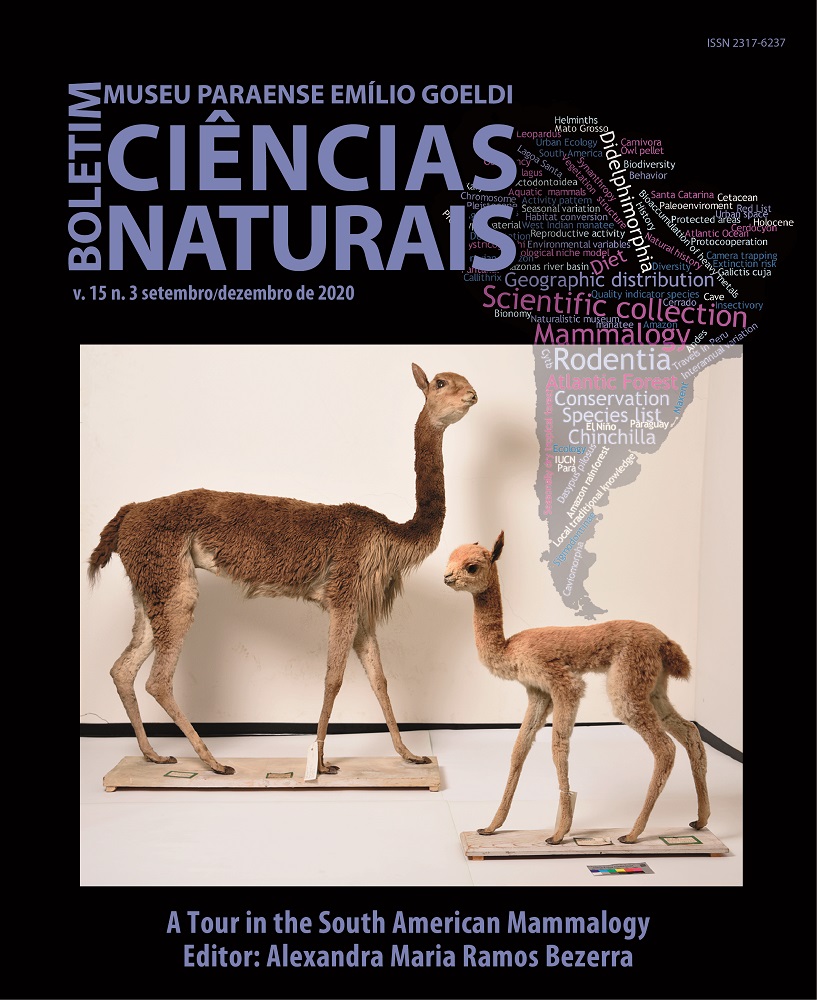Biology and parasitology of the aerial insectivorous bat Myotis nigricans (Schinz, 1821) (Chiroptera, Vespertilionidae) in the city of Rio de Janeiro, Rio de Janeiro, Brazil
DOI:
https://doi.org/10.46357/bcnaturais.v15i3.247Keywords:
Reproductive activity, Bionomy, Insectivory, Atlantic Forest, SynanthropyAbstract
Myotis nigricans (Schinz, 1821) is an aerial insectivorous bat widely distributed in the neotropical region, found in all Brazilian biomes and adapted to urban centers. We present bionomic, reproductive, dietetic and parasitological data from 28 specimens of Myotis nigricans captured in Atlantic Forest areas in the city of Rio de Janeiro, southeastern Brazil, in order to provide more information on ecological interactions of these animals, especially those from urban parks. The specimens presented measurements similar to those described for the species, being sexually active in spring (October). Insect fragments of the orders Diptera, Coleoptera, Hemiptera and Lepidoptera were found in the stool samples examined. Five individuals were infested with Basilia sp. (Diptera, Nycteribiidae), and helminths of the Trematoda and Cestoda classes were found in the gastrointestinal tract, the latter constituting the first record for M. nigricans. Despite the widespread distribution of this species, data on bionomy and ecological interactions are fragmented and punctual. Thus, the results presented here reinforce the importance of carrying out systematic follow-ups to understand the relationships established by these animals in forested and anthropized environments.
Downloads
Published
Issue
Section
License
Publication means fully assigning and transferring all copyrights of the manuscript to the journal. The Liability Statement and
Assignment of Copyrights will be enclosed with the notice of acceptance. All the authors must sign the document and return it to the journal.








